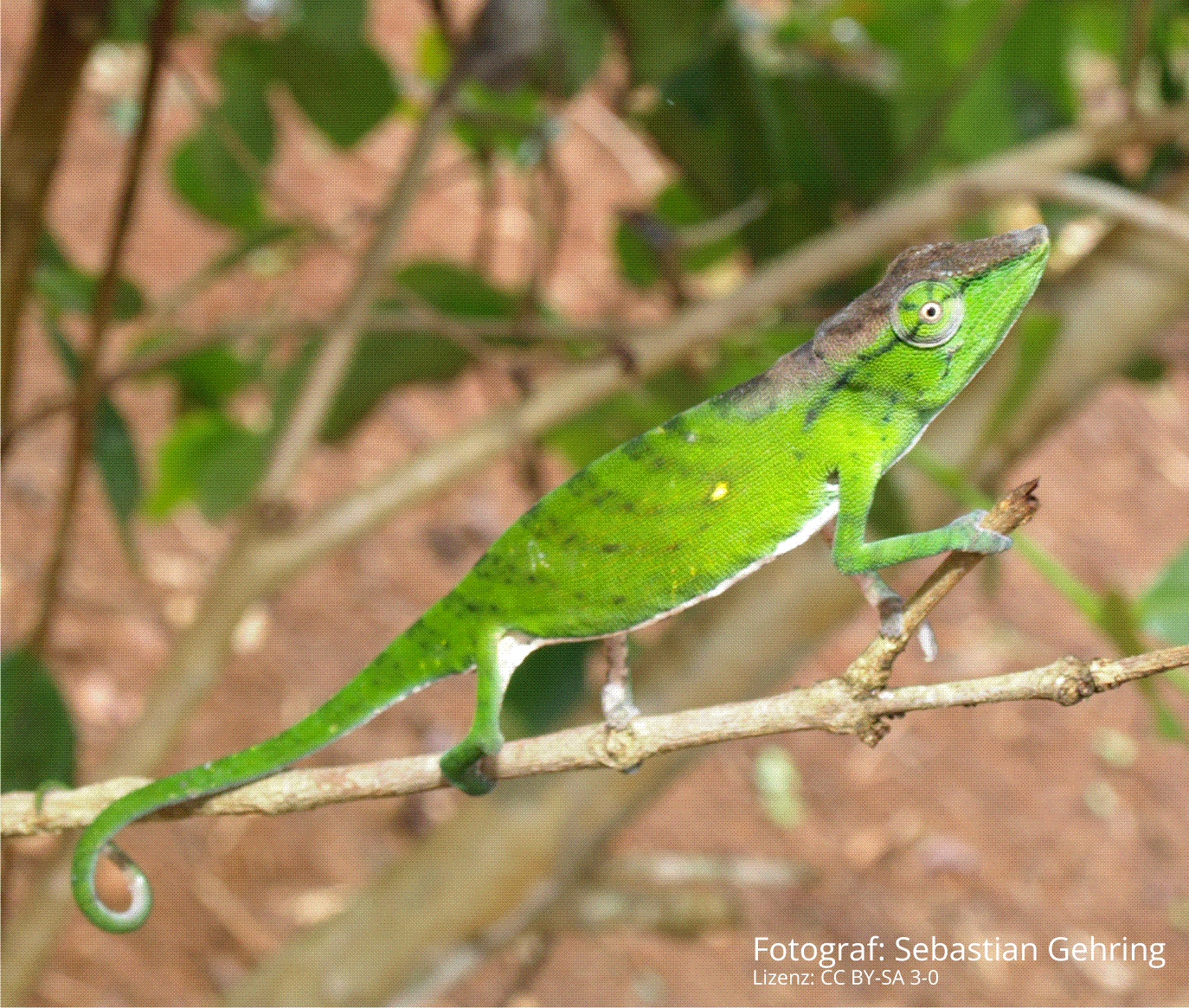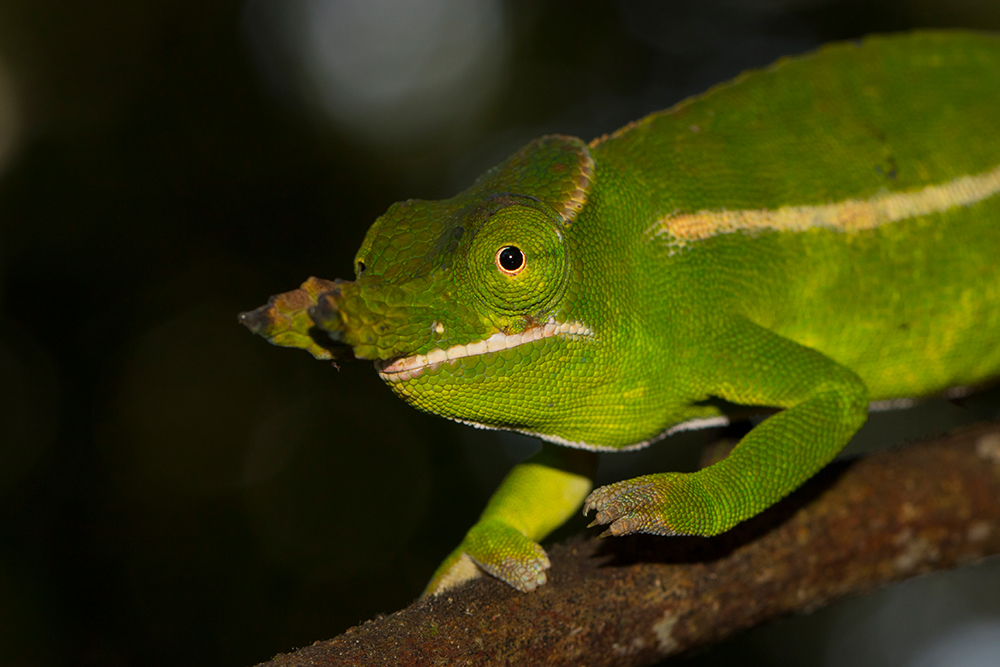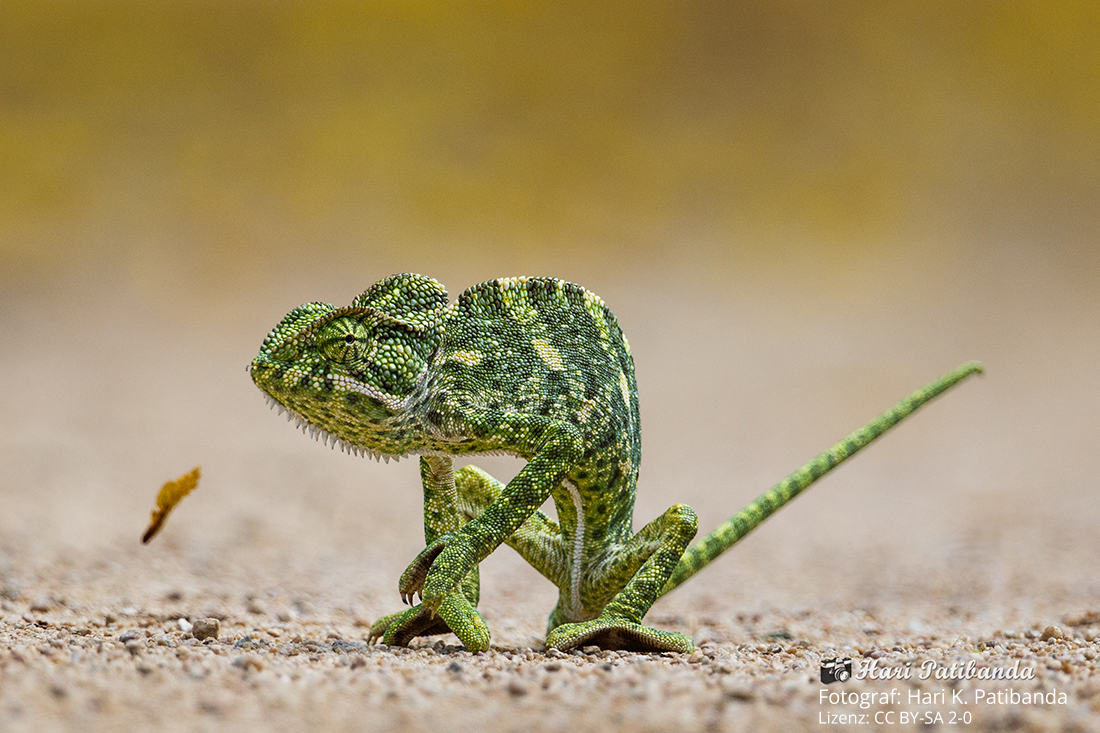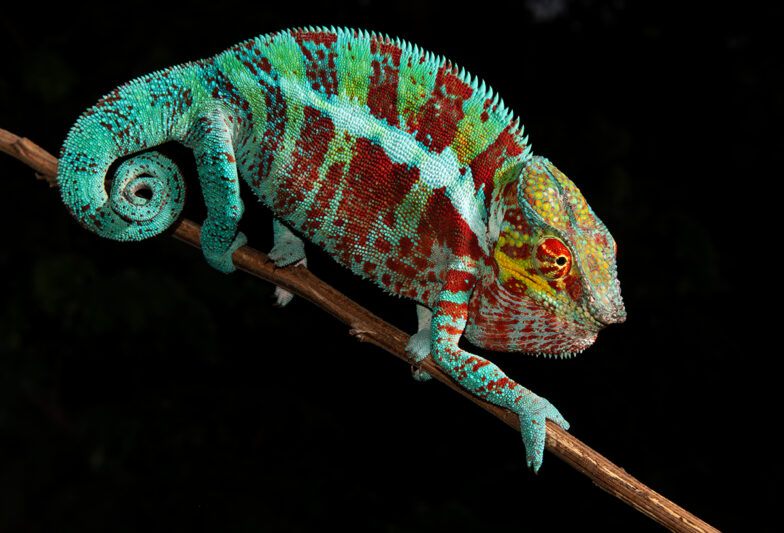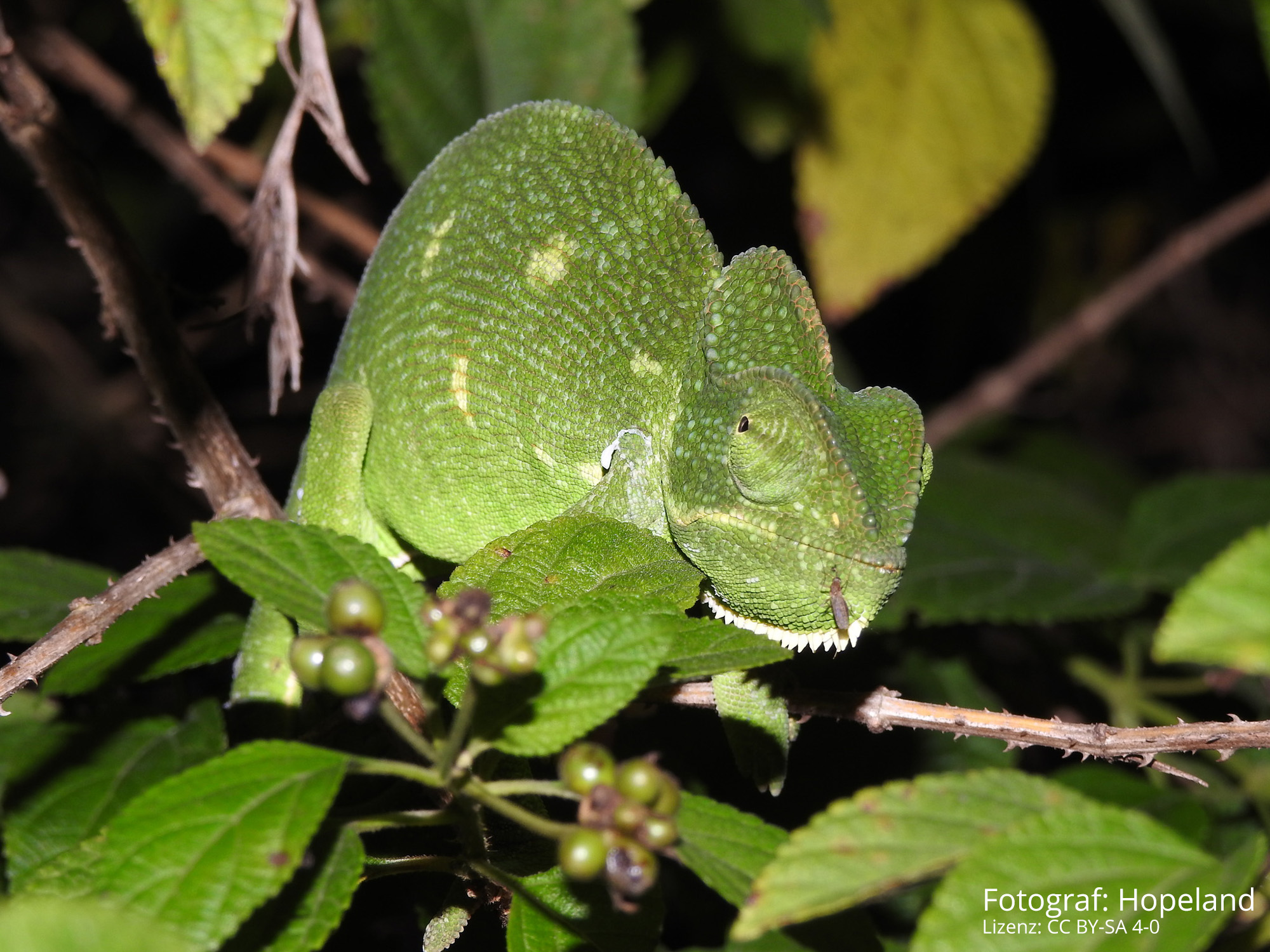Scientists from Tanzania and England recently carried out a survey study of the herpetofauna in the Kimboza forest. Kimboza is located in eastern Tanzania on the edge of the Eastern Arc Mountains, a 600 km long mountain range. To the west of Kimboza are the Uluguru Mountains, to the east the Ruvu Reserve. Kimboza is one of the smallest reserves in Tanzania with an area of only 4 km². It ranges in altitude from 170 to 480 metres.
To detect reptiles and amphibians, manual searches were carried out on two nights in December and January and for eleven consecutive months between December and June. In addition, bucket traps were placed in the ground along two lines, a total of between 11 and 20 buckets at a distance of 5 metres from each other. The animals found were identified morphologically using existing field guides. Samples were taken from 12 finds in order to genetically confirm the species identification.
A total of 42 different reptile species and 29 amphibian species were recorded in Kimboza. As expected, Trioceros melleri, Rieppeleon brevicaudatus and Chamaeleo dilepis were among the known chameleons of the forest. However, the study also revealed something astonishing: Kinyongia magomberae, actually known from the forest of Magombera and from the lowlands of the Udzungwa Mountains National Park, was found there. This corresponds to an extension of the distribution area of this species of 128 km. In a study from 1994, Kinyongia oxyrhina is already mentioned once in Kimboza. Even then it could have been a case of confusion and actually a Kinyongia magomberae. The species may have been much more widespread in the past than it is today. However, as the lowland rainforests of Tanzania have been extensively deforested for many decades, the chameleon’s habitat has been greatly reduced – and could have led to the spread of a species in forest areas that are no longer contiguous today.
Kimboza, a small lowland forest with an outstanding herpetofauna diversity in east Africa
John V. Lyakurwa, Simon P. Loader, Wilirk Ngalason, Rikki Gumbs, Caleb Ofori-Boateng, H. Christoph Liedtke
Nature Notes 14(10), 2024
DOI: 10.1002/ece3.70406
Picture: Kinyongia magomberae, photographed by Andrew R Marshall in Mwanihana forest, Creative Commons Attribution 3.0 Unported



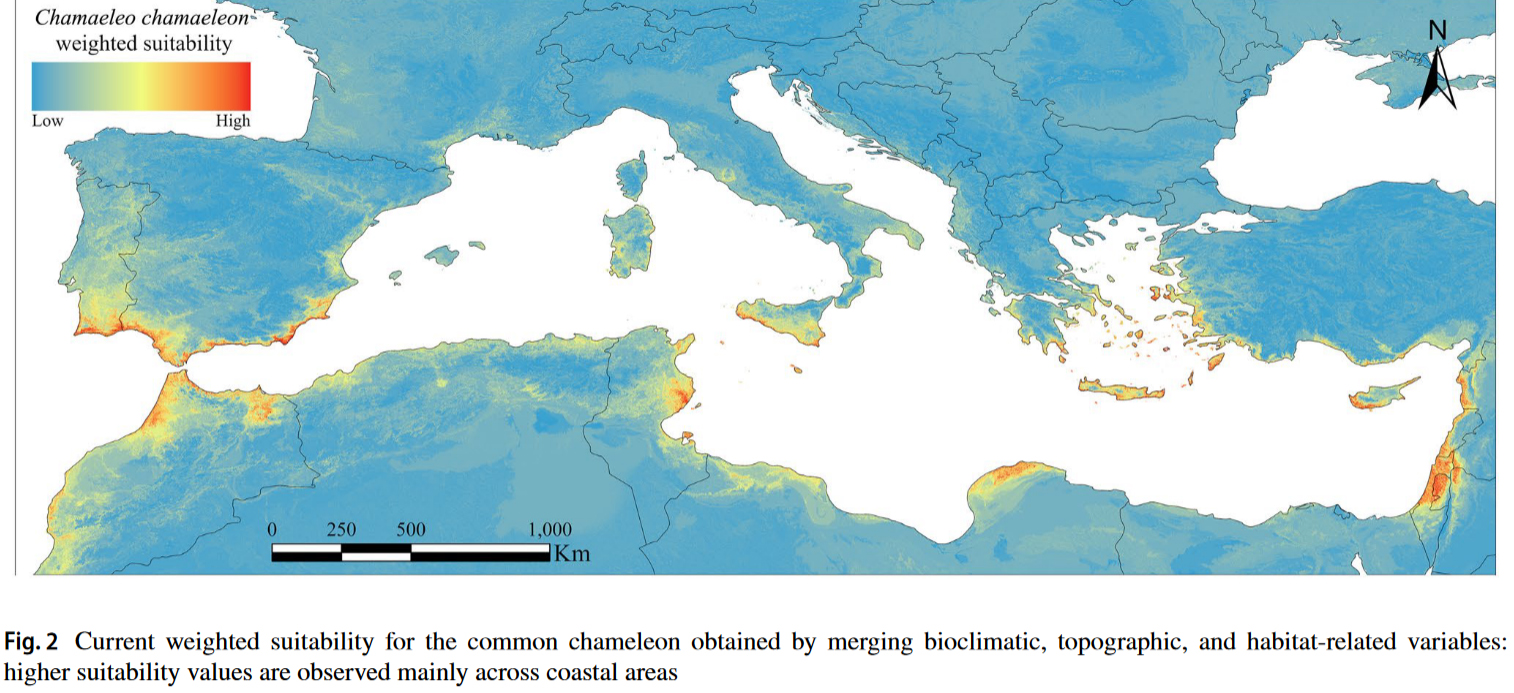
 For the study, the existing literature, sampling by the author himself, OpenStreetMaps and information from the Global Biodiversity Information Facility (GBIF) were used, statistically processed and analysed. Climate, topography, habitat of the sites and connections of existing populations were used to predict potentially suitable new habitats.
For the study, the existing literature, sampling by the author himself, OpenStreetMaps and information from the Global Biodiversity Information Facility (GBIF) were used, statistically processed and analysed. Climate, topography, habitat of the sites and connections of existing populations were used to predict potentially suitable new habitats.